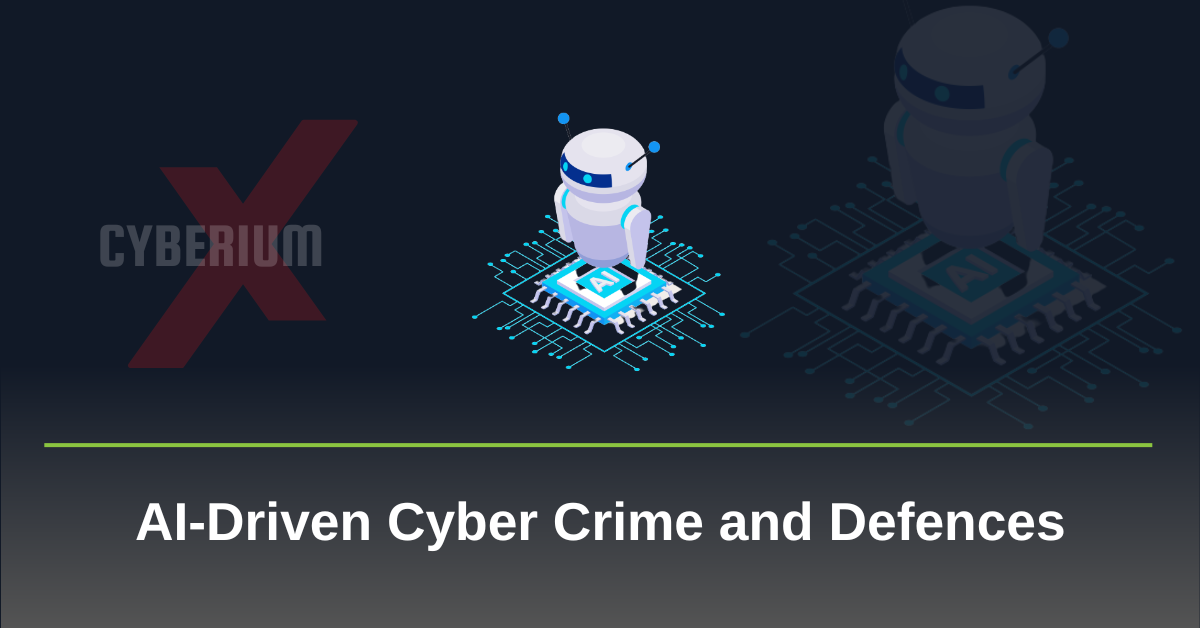Introduction
The fusion of Artificial Intelligence (AI) and Cyber Security resulted in a new era of cyber threats and defense mechanisms in the quickly changing digital landscape. AI-driven cyberattacks are getting more and more sophisticated, launching targeted and evasive attacks by utilizing the huge capabilities of machine learning algorithms. In order to prevent and adapt to these new attacks, Cyber Security experts are simultaneously utilizing AI to create improved defense techniques. This extensive blog covers the cutting-edge strategies used to defend our digital infrastructure against these threats and digs deeper into the intricacies of AI-driven cyber attacks.
AI’s Increase in Cyberattacks
The widespread use of AI technology has given cybercriminals a potent ally in their efforts to compromise security measures. The following essential elements, which are at the heart of AI-driven cyberattacks, fuel a variety of malicious strategies:
Automated phishing campaigns use data analysis to create personalised, persuasive emails that are tailored to specific consumers. As a result of these efforts’ utilisation of users’ private information and preferences, the possibility of successful infiltration has greatly increased.
Cybercriminals use hostile machine learning (ML) approaches to trick AI-based security systems. They can get beyond the safeguards and get unauthorized access to systems by quietly modifying inputs.
Zero-Day Exploits: AI algorithms are quick to spot weaknesses in software and systems that have not yet been discovered. Zero-day exploits have resulted from this, which are very sophisticated and challenging to find using standard security procedures.

Malware produced by AI is polymorphic, continually changing and adapting its code to elude detection by signature-based systems. It is difficult to recognize and defend against such dangers because of their dynamic nature.
The Risks of Cyberattacks Driven by AI
AI-driven cyber attacks are a serious threat to everyone, including governments, businesses, and individuals. Their effectiveness is influenced by the following elements:
Cyber attackers may execute campaigns at previously unheard-of speeds and on an enormous scale thanks to AI. This power overwhelms conventional security infrastructure, which makes detection and reaction more difficult.
AI-powered attacks have the capacity to learn from the results of their activities, which enables them to quickly adapt and evolve. They become more resistant to static defense mechanisms as a result.
Evasion Techniques: AI-driven attacks can avoid detection by imitating legal user behaviour and blending in with regular network traffic. They are more difficult to recognize and defeat because of their deceitful strategy.
Attackers can affect AI models by data poisoning, which involves providing them with inaccurate or malicious data. AI defenses can become ineffective as a result of this manipulation, which can result in erroneous decisions and actions.
Cyber Security defense Powered by AI
Cyber Security experts are looking to AI as a critical tool for bolstering defenses and improving incident response capabilities in the face of these changing threats. To use AI in Cyber Security defense, several strategies are being used:
Behavioural Analysis: AI-driven security systems continuously track and examine system activity, network traffic, and user behaviour. These systems can quickly identify possible risks by spotting deviations from known patterns, anomalies, or suspicious activity.
Threat Intelligence and Predictive Analysis: Artificial intelligence (AI) systems are essential for collecting and analyzing enormous amounts of threat intelligence data from multiple sources. This makes it possible for organizations to anticipate and actively counteract new hazards before they manifest.

Adaptive Security Measures: AI-driven defenses are capable of dynamically modifying security rules and parameters in response to changing threat landscapes. Defense mechanisms are kept effective against new threats thanks to this adaptability.
Using Natural Language Processing (NLP) to Spot Phishing: To detect phishing attempts, NLP algorithms powered by AI examine the content of emails and other communications. As a result, there is a lower chance that employees may experience such assaults.
The Cyber Security field is embracing collaborative AI technologies that make it easier for enterprises to share threat intelligence and analysis. This team effort improves overall defense capabilities and facilitates quicker reaction times.
Ethical Aspects of AI-Powered Cyber Security
Ethics are more important than ever as AI becomes a crucial component of Cyber Security. Due to the substantial data gathering and monitoring needed for AI-powered protection, privacy concerns are raised. To maintain ethical operations in the industry, the proper balance between strong security and protecting individual privacy must be struck.
Conclusion
The terrain of cyberwar has been permanently changed by the fusion of AI and Cyber Security. The challenges posed by AI-driven cyber attacks are always changing as they take advantage of AI’s speed, adaptability, and evasion strategies to get past defenses. But AI also gives security experts the ability to create more sophisticated and adaptable protection procedures, ushering in a new era of Cyber Security defense. We can all improve our digital resilience and protect the future of our linked planet by utilizing AI’s potential while upholding ethical standards. We can only keep ahead of the continuously changing threat landscape via constant innovation, cooperation, and an uncompromising dedication to security.
You can check out our other blogs here.
Stay Safe !!!
Team CyberiumX

